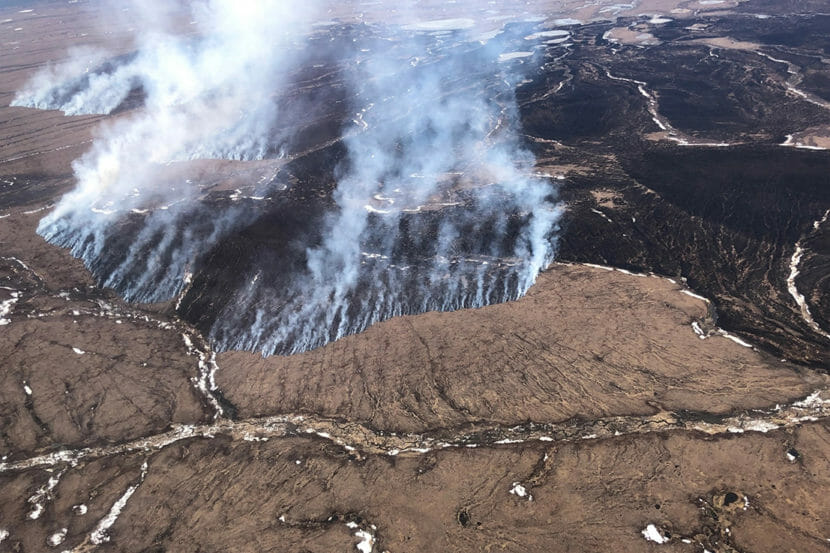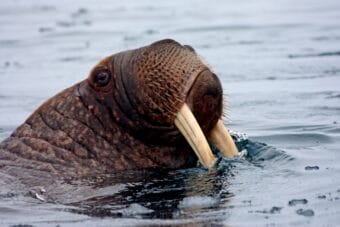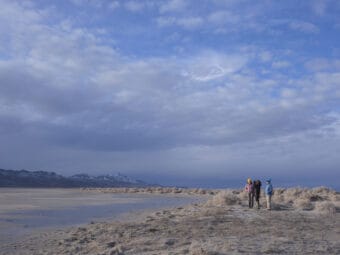
It might seem weird to talk about wildfires in December. But it’s worth mentioning that all of the snow falling on Alaska now won’t mean much for next summer’s fire season.
Take last spring. A winter’s worth of snow melted off ahead of schedule in Southwest Alaska, leading to earlier-than-usual fires in a part of the state that’s not so fire-prone to begin with.
So what will happen with fires next summer?
That’s the work of Uma Bhatt, a professor of atmospheric sciences at the Geophysical Institute at the University of Alaska Fairbanks. In March, Bhatt and her team will try to predict how bad the upcoming fire season will be.
But for now, Bhatt says, they’re trying to understand why they were so surprised by last season’s early start.
Listen:
The following transcript has been lightly edited for clarity.
Uma Bhatt: Things have been changing in the southwest of Alaska. So as the season has evolved, and we’ve gathered information from different people, it makes a bit more sense what happened. But I remember being shocked in April when the Kwethluk fire started, and we were sitting in all that snow in Interior Alaska. And that led to a lot of smoke and disrupted many things in that part of the state that isn’t really used to fires. And the other interesting feature about this fire season, was in Interior Alaska it started very abruptly, and it ended very abruptly. So we look at May, June, July temperatures, and May, June, July precipitation. And then we look at the start of the long rains. We typically get rains in late July. And this year, they came in with a vengeance and just shut down, pretty much shut down, the fire season pretty quickly. But that doesn’t always happen. If those rains get delayed, it could change the fire season.
Casey Grove: It’s almost like if we hadn’t gotten lucky with all that rain, it could have been much worse, right? Is that one of the takeaways?
Uma Bhatt: Absolutely. Yeah. And so in our prediction analysis, we’re trying to figure out the predictability in those, what I’m calling the long rains, the rains that start in late July. Can we predict them on a seasonal scale? Are there some hints in the climate system that we can look at, say in May or June and say, “Okay, we think the rains will be on time.” And that’s a really important question to answer, too, in order to get a handle on what kind of fire season we’re going to have.
Casey Grove: Yeah. Just getting back to how unusual it was that the snow melted out earlier in that part of the state. I mean, the fact that there was plenty of snow in a lot of parts of Alaska, it’s a little misleading to think, “Oh, there’s a lot of snow or there was a lot of precipitation, and that’s going to factor into our fire season.”
Uma Bhatt: Yes. And a story that I tell is, in 2004, May was one of the wettest Mays. And I remember thinking to myself, “Oh, great, we’re not going to have a bad fire season.” And that, if you remember, was our record year. And so talking to fire analysts, it was probably that rain in May that helped a lot of vegetation grow. So it actually increased the amount of fuels. And I think another thing that I’ve learned over the years: We can have big fire seasons, but they can occur in many different ways. And I think this year was, again, another different way of the fire season occurring, where over a million acres were burned in southwestern Alaska, and that broke all records for that part of the state.
Casey Grove: Well, I guess there’s kind of this, like, whatever, 500-, 600-, however many hundred-pound gorilla in the corner of the room that we haven’t mentioned yet, which is probably that climate change plays a big role in this too, right?
Uma Bhatt: I think climate change is making it harder to predict things. And if we look at our records, it looks like the lightning is increasing. We don’t feel 100% confident, because the lightning sensors have changed over time. But I think we’re getting more and more confident that it looks like lightning counts are increasing. So that’s, you know, related to climate change and warming of our atmosphere. The other thing that seems to be happening is that we’re getting more convective precipitation, and we’re getting less large-scale precipitation. So large scale is our July long rains. But the convective precipitation are those cumulus clouds that we get during the summertime. And those are typically associated with lightning, and they seem to be increasing all over the state. And they’ve particularly increased in southwestern Alaska. And just based on the acres burned over our record over the last 20 years, we’ve had most of our extreme years during that time. So yes, it is, in addition to all the different processes, those processes are being, you know, tweaked by what the large scale climate is doing under climate change.
Casey Grove: The type of fuel is part of it, too. Did you mention that you had talked to people on the ground there that talked about things growing out on the tundra more?
Uma Bhatt: Yes, my tundra specialists have documented increases in vegetation. But I also meet with elders in southwestern Alaska. And I’ve been doing that for about 10 years, 10, 11 years now. And typically, we just, I present various climate analyses and people talk about what they see locally. And that was a very common observation throughout southwestern Alaska that everyone said, you know, “I used to be able to see, you know, very far from my house, and now there’s so much shrubbery.” And again, I think the thinking is that in southwestern Alaska, these fires are now able to burn on the tundra because there’s just a lot more shrub biomass. So the fuels are changing, the climate is, the weather’s changing. That is probably why we got these very early season fires.
Casey Grove: I understand it may be a messy process and that it may be difficult at this point. But, Uma, I have to ask, you know, summer 2023, wildfire season in Alaska, it’s December right now, what is your prediction?
Uma Bhatt: So we will give you that prediction in March. I don’t have the data yet. We need to understand better where the predictability is in the observations. You know, we have some information, and I think the El Niño state is an important predictor. So that didn’t quite work out this year, because in March, it was a La Niña. And typically, La Niñas don’t lead to a big fire season. And that’s not quite what happened. So yeah, I’m not comfortable making such a forecast yet.
Casey Grove: That kind of made me think of that famous quote, I think it’s Donald Rumsfeld, you know, ‘There’s known knowns and known unknowns,’ and it’s like, you need to kind of identify those things, it sounds like.
Uma Bhatt: Yes. And that’s what we’re doing with our group. And then we can use that information to increase the skill from these dynamical weather models. So that’s the strategy we’re working on.



